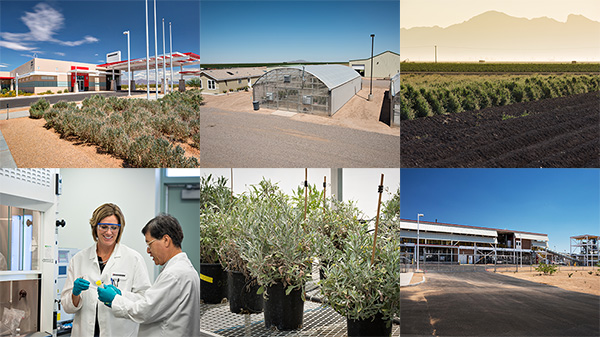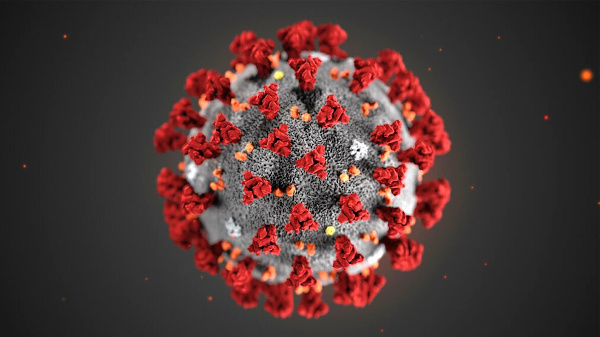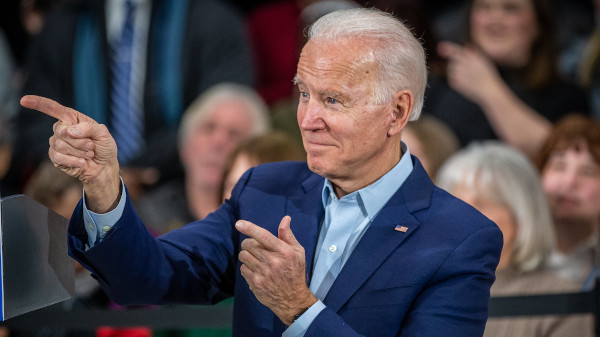Will Guayule Rubber Be A Boom Or Bust For Arizona?
After More Than A Century, The Desert Shrub May Soon Be Ready To Contribute Its Rubber To Automobile Tires And Possibly Other Applications With Arizona As The Nexus

Graphic by Modern Times Magazine.
By Joey Hancock and Ryan Scott
Published on Aug. 26, 2015
Page 1 of 3
For more than 100 years, governments, corporations, entrepreneurs and scientists have looked to a desert plant to revolutionize the rubber industry.
Time and time again, dreams of finding a U.S. source of rubber to supplement Hevea trees have rested with a small desert shrub called “guayule.” This shrub is a virtual “Forrest Gump” of commodities, having shown up in the unlikeliest of places alongside some very famous names.
Thomas Edison, Henry Ford and John D. Rockefeller were the first to raise concern over British hegemony over the rubber trade through its vast South American — and particularly Brazilian — holdings in the early 20th century. In World War II, President Franklin Roosevelt and the U.S. government explored the possibility that guayule would be needed to supplement areas shut off by Japanese Imperialism and relatively weak South American influence.
After the potential threats subsided, however, using the shrub became an afterthought because it didn’t make economic sense: extracting the rubber from within the plant is not as simple as slicing a Hevea tree. The intensive process utilizes solvents such as acetone to extract the rubber and yields were low.
“In hevea the latex is produced in these laticifers, these tubes, and that is why it can be tapped. Just like you would tap a maple tree. In Guayule the rubber is made in individual cells and these cells have to be broken open to get the rubber out,” said Dr. Dennis Ray, University of Arizona distinguished professor.
Today, the drive to develop guayule as a supplement to Hevea is mainly economic, according to the companies that are pouring ever increasing economic resources into developing guayule production. Scientists for a variety of organizations are developing engineered guayule plants that produce more rubber and others are researching better ways to extract that rubber.
“Now is the time that people like Bridgestone are looking for alternatives, not to replace hevea, but supplement it so there is enough rubber for all the cars in India and China and various products that we need because there are just more people,” Ray said. “The Hevea plantations are not being put back in, more people are wanting rubber products, there are more people on the Earth and whether hevea can continue to meet everything is very much in question.”
But will the gamble pay off in the Grand Canyon state?
Can Arizona Become The Guayule Capitol?
In Arizona, much of the innovation is being driven through the work of big companies like Bridgestone and smaller, focused firms such as PanAridus. Bridgestone is the largest producer of tires in the United States and have been researching guayule since the 1980s in Akron, Ohio but are now taking the next step in the company's 10-acre Biorubber Research Campus in Mesa, Ariz. About four years ago, Bridgestone made the decision to reinvest in guayule as a potential source of natural rubber and this resulted in the company's investment in Arizona and the current efforts to make guayule a viable source of rubber for tire manufacturing, said Bill Niaura, director of new business development for Bridgestone.
“The facilities in Arizona are new but it is really an extension of what we’ve learned in the past,” he said. “In the late 1980s to early 1990s, we built a pilot facility as part of a government project and that was our first foray into industrial production of guayule rubber at a research scale. That project was funded by the U.S. Department of Defense, so it had different goals than commercial production of rubber for tires, but it did provide a lot of learning.”
The work now being done by Bridgestone is completely self-funded and is a part of the company’s research and development effort for the purpose of developing an alternative and domestic source of natural rubber.
“If we look at the tire industry, natural rubber from the Hevea tree is the single largest raw material that we purchase for making tires, and therefore it is critically important and it’s a material we can’t replicate synthetically because mother nature does a much better job building rubber for certain tire uses than we can do synthetically,” Niaura said.
Having only one source for rubber is not ideal for a company as large as Bridgestone and there are many risks that could determine the costs of importing Hevea rubber to the United States and essentially change the price of tires in stores across the country.
“The risks you can’t control are climate change, regional issues or political stability, or disease in Hevea that affects that material so you’d like to have another source for that,” he said. “As you look at plants there are literally several thousand that make rubber as part of their biosynthetic activity. Hevea is hugely productive and pretty close to that is guayule, which is second in line, and that is why we are focusing on that to diversify our supply base.”
Guayule is an arid desert shrub and is native to the Sonoran Desert so Arizona is the primary location for the production of guayule for rubber making purposes.
The rubber produced by the Hevea tree is not necessarily cheap and the investment in Arizona and the revitalization around guayule is what Bridgestone’s internal analysis suggests that guayule can be cost competitive which originates in the fluctuation of Hevea rubber prices, Niaura said.
Most Popular

About Us
Login
Contact Us
Subscribe
Advertise With Us
Copyright 2010 to 2020 Modern Times Magazine and Modern Communications. All Rights Reserved.
Terms of Service
Privacy Policy

Login
About Us
Contact Us
Subscribe
Advertise With Us
Copyright 2010 to 2020 Modern Times Magazine and Modern Communications. All Rights Reserved.




